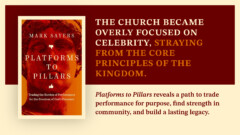In the first article of this series we examined some of the basic issues in Bible translation. We saw the difference between paraphrase, dynamic equivalence and formal equivalence and identified some rules of translations. Of utmost importance was the necessity of translating words, not meaning.
Today we continue with the introduction to translating and translations. Perhaps it is too obvious to mention but I will do so regardless. The Bible was not written in English. Rather, it was written in Hebrew and Greek with a small section in Aramaic. The job of the translator, of course, is to know and understand the original languages and translate the words into the receptor language – in our case, English. The challenge is greater than merely translating words, for the translator must first discern what the original words are. This introduces us to the concept of text-types. The original “autographs” of the Bible no longer exist. Rather, what we have are copies and more than likely, copies of copies of copies. Often times these are merely fragments of books of the Bible, perhaps written on a tablet or parchment or even in a letter from one person to another.
Text Types
There are four primary text types.
The Byzantine text: The Byzantine texts were preserved by the Byzantine Empire and constitute the vast majority of available Biblical texts. Unfortunately many of the documents are from a relatively late date.
The Western text: Western texts originated from a poor and sloppy scribal tradition, so are considered the least important of the text types.
The Alexandrian text: The Alexandrian texts were prepared by highly skilled scribes in Alexandria or the immediate area. They are generally considered to have the highest credentials.
The Caesarean text: The Caesarean text originated in Egypt and combined the Western and Alexandrian texts.
The translator or scholar must examine all of the available texts and decide which are most accurate. This has become more science than art or guess-work. Some of the criteria they use to make a decision are:
The age of the text. Generally an older text is considered authoritative over a younger one, though this is not always the case. Even in the early church we read about people deliberately changing the text of Scripture. Irenaeus, one of the church fathers, wrote “Marcion and his followers have betaken themselves to mutilating the Scriptures, not acknowledging some books at all, and curtailing the gospel according to Luke and the Epistles of Paul, they assert that these alone are authentic which they themselves have shortened.” Age is important, but not in isolation.
The length of the text. Often the shorter a text is the more authoritative it is considered because scribes were more likely to add to a text than take away from it.
The difficulty of the text. A difficult text is considered more authoritative than a simple one since scribes were more likely to change a difficult reading than an easy one. If a text is still very difficult, it is likely that it has not been edited, for a scribe would not purposely make a text more difficult.
Text comparison. Texts are compared to each other and when many similar texts match it is given more weight than the one that is different from the rest.
There is plenty of disagreement on methodology and which documents are better. The task of the scholar and translator is difficult, but in the end we have confidence that the text of the Bible is at least 99% pure (probably higher) and that no basic doctrines are affected by the small sections that are still in doubt.
Biblical Texts
There are two main schools of Biblical texts. The first is known as the Textus Receptus or Received Text. This text was compiled in the early 16th century by Erasmus, a Greek scholar who was Roman Catholic but also humanist. He gathered several Byzantine texts, most of which were quite new (none were written before the 12th century) and published a Greek New Testament based on these. His work was revised many times over the following years until in 1633 a version contained the words “”The text that you have is now received by all, in which we give nothing changed or perverted.” From this time this text was known as the Textus Receptus (received text) and it became the basis for every English translation until 1881, including the King James Version. Those who believe the King James Version is the superior translation into English defend the superiority of the received text but modern scholarship has largely agreed that the text is not as accurate as the alternative.
The second text is known as the Westcott and Hort text which was first published in 1881. These scholars decided that the Byzantine texts underlying the Textus Receptus were too modern so set out to find older texts, eventually relying on manuscripts that were written as early as the second century AD. Many of these manuscripts had not been discovered in Erasmus’ time so he did not have access to them. The Westcott and Hort text has formed the basis for almost every English translation after 1881, including the standard English translations you might find in your local bookstore.
I will not enter into the great debate about the merits of each of the two texts. Suffice it to say that I read and love Bibles based on the Westcott and Hort text and certainly do not agree with many of the arguments of those who defend the Textus Receptus. In either case I appreciate the desire to have the Bible in all its purity.
History of the Bible in English
This would be an appropriate location to discuss the long history of the English Bible. However, that is not completely relevant to our discussion, so I will direct you to resources which discuss the topic in detail. A good place to start is English Bible History.
This series will continue tomorrow.










